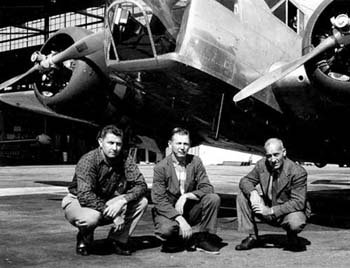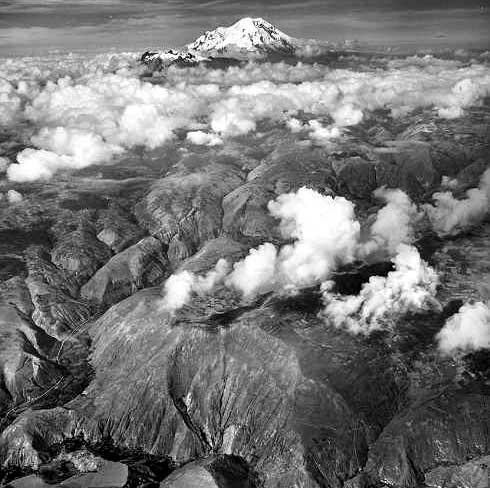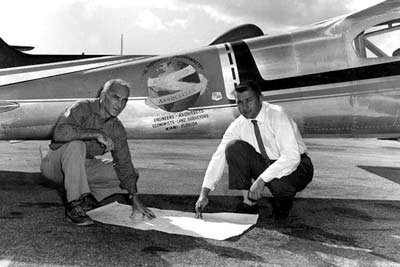The Wayland Mayo Story
Biographical Notes
 A composit photo illustrating a transitional period in my life — from military to civilian . The top photo was taken in 1948 at Lackland AFB. The main larger photo was taken in Miami, Florida, in 1958 while I was working for Rader. |
As a mapping photographer, I was essentially in charge of the aircraft for each mission. Every pilot that I flew with was happy to let me preflight the plane, file the flight plan, and do the flying to and from the project. I am an accomplished mechanic and in many instances did maintenance on the plane. They bought an AT-11 to do a mapping project in Ecuador. The plane arrived with no camera porthole, and the aircraft needed a complete nose cone. I was able to accomplishe a lot of this work to get the camera mounted without outside assistance.
I was in charge of obtaining acceptable coverage on these trips and the Chief Pilot allowing me to fly to and from the project on virtually every flight. It was primarily my job to locate the project, make sure the aircraft was always on line, accomplish the photography, process and check the film. We used the lab at “El Instituto Geographico Militar”, where I also instructed them in lab work. I can barely order a hamburger in Spanish and none of them spoke English; but, we got the job done. We made several flights from Miami, to Montego Bay, to Panama, to Quayaguil, to Quito Ecuador so I got a lot of hours in the twin Beach.
Our work was supporting the efforts of the Equadorian El Instituto Geographico Militar at the time of an attempted government overthrow. We were advised to leave immediately as the situation was explosive. Arriving at the plane we found armed guards, refusing us access to the AT-11. My boss was able to bribe them and we quickly took off for Guayaquil. Gassing up there we were soon on our way back to civilization. Government overthrows are not uncommon in South American countries. I was always afraid to tell anyone who I worked for.

 Wayland and Boss, ready for trip to Ecuador in AT-11 |

In all truth, this photograph is one of those I prize the most. It was selected as the cover of the annual “Photogrammetric Engineering Yearbook” in 1960.
 By no means was all of my work with Rader located in Ecuador. Here my Boss and I are planning a Bahamas mission where we will be using the Cessena 180
|